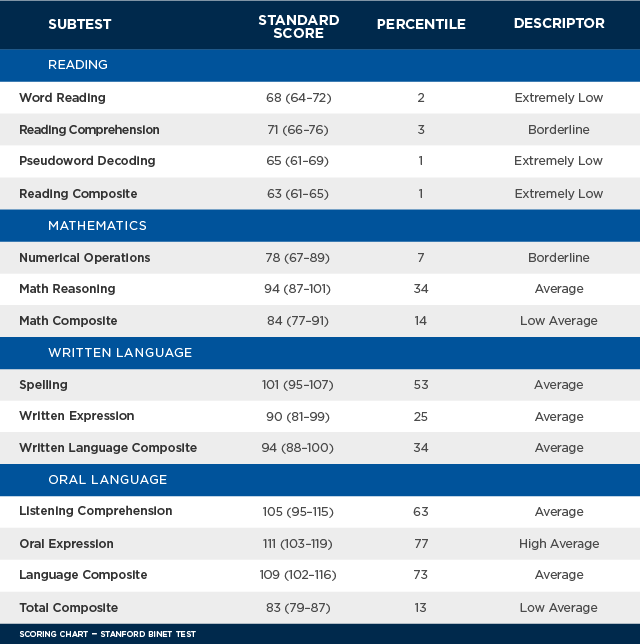What’s The Score? Problems With IQ Tests For Kids


Using an IQ test for kids is an attractive tool those looking to benchmark a child’s educational progress. With clear-cut standardized scores, IQ tests make it obvious that a child with a low score would need different instruction than one with a high score. Seems helpful, right? Unfortunately it’s not quite that easy.
While these tests have been the intelligence testing standard for the past 100 years, there has been controversy in the education world as to how effective they truly are – especially for children.
Let’s get to the bottom of the debate around IQ tests for children: what’s the problem and what’s the best alternative?
Defining IQ Tests
IQ tests aim to measure mental capacity using a variety of categories – including verbal skills, visual-spatial reasoning, memory and processing speed. Children who take IQ tests are provided with a number based on how they score against their age group, which signifies whether they are considered gifted, average, or at risk of learning and behavioural issues.
Three of the standard IQ tests used today include:
Wechsler Intelligence Scale for Children – Fifth Edition (WISC-V)
This is the most commonly used IQ test for children ages 6 to 16. Arguably the most thorough of the bunch, the WISC-V test not only produces a full-scale IQ score, but also produces five “factor scores” that measure different dimensions of functioning.
Stanford-Binet Intelligence Scale – Fifth Edition
Unlike the WISC-V, this intelligence test is used for people of all ages — from two-year-old children to seniors in their late 80s. The Stanford-Binet Intelligence Scale – Fifth Edition test measures five content areas, including fluid reasoning, knowledge, quantitative reasoning, visual-spatial processing and working memory.
Differential Ability Scales – Second Edition (DAS-II)
This IQ test focuses on cognitive ability and concepts such as abstract reasoning and critical thinking, and can be used with children ages 2 to 17. The DAS-II test is used to measure abilities across a range of domains, such as inductive reasoning, verbal and spatial ability.
Issues with Scoring
Standard IQ tests score participants based on proficiency in a number of categories, as is shown in this scoring chart.

In an ideal world, we would be able to measure a child’s intelligence clearly and without variables; however, just as a child’s body changes drastically over time, so too can their intelligence level. Research has shown it is common for a child’s IQ score to fluctuate while they are still developing, making it difficult to determine how accurate their identified score actually is.
Additionally, factors like distractions, anxiety, and stress are not taken into account in this scoring system and could drastically affect a child’s performance on any given day. Even more outside of the child’s control, potential administrative errors can also sway what category a child is placed under.
The Problem with Labels
Research shows that labels of all types are harmful for children – and can influence future behaviour in drastic ways. Instead of focusing on learning style, IQ tests provide children with a fixed score that teachers and parents use to determine the course of their education.
Children who believe their intelligence is fixed are also more likely to experience lower self-confidence, avoid challenges, and simply allow the label to speak for itself.
Missing the Whole Picture
IQ tests can be a great way to analyze specific aspects of a child’s intelligence, but they ultimately fail to look at the entire picture. Examinations of intelligence should not be fixed to a one-size-fits-all mentality. They need to consider a child’s overall pattern of strengths, weaknesses, environment, and culture.
To overcome the number of issues that come with IQ testing for children, parents and teachers should consider using programs that focus on qualitative learning and overall potential, not just quantitative scores. Instead of determining what their intelligence level is based on a few fixed categories, assessments should focus on how a child learns, and what educational tools they respond best to.
A Dynamic Alternative
Dynamic tests and assessments are an effective alternative to the standard IQ test for kids. They provide children with the opportunity to work in a comfortable, open environment — one that leaves room for mistakes, exploration and creativity. This gives the administrator of the evaluation the opportunity to assess the child’s needs using a more holistic approach.
Parents and teachers should also look for tests and assessments that provide more than just a final score.
In order for a child to achieve the best results they can, tests and assessments should provide next steps and help create a program specific to the child’s needs.
All educators and parents just want to give students what they need to thrive and succeed throughout their school years. And with different personalities, experiences, and learning styles comes a need for personalized testing.
By avoiding standardized IQ tests, and instead opting for dynamic styles of assessment, each student will be given the care and attention required for them to achieve their best throughout their educational journey.




